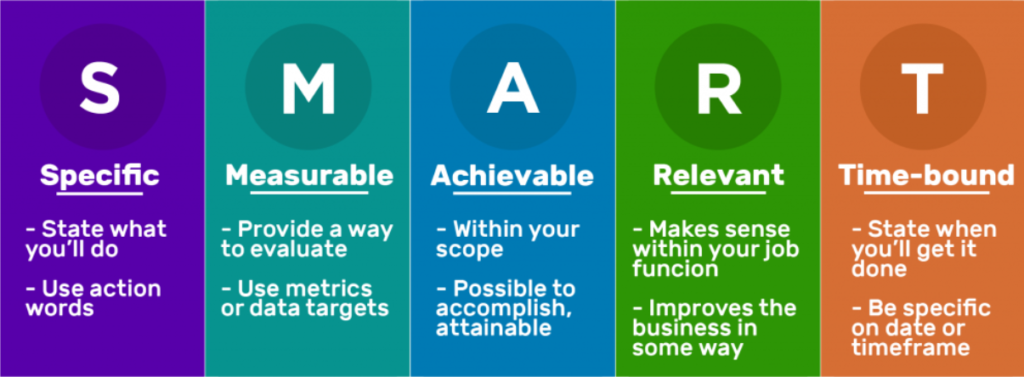What Are SMART Goals & How To Use Them
What Does SMART Goals Mean? SMART is an acronym that you can use to guide your goal setting. To make sure your goals are clear and reachable, each one should be: How to Use SMART Goals 1. Specific Your goal should be clear and specific, otherwise you won’t be able to focus your efforts or feel truly motivated to achieve it. When drafting your goal, try to answer the five “W” questions: Example Imagine that you are currently a marketing executive, and you’d like to become head of marketing. A specific goal could be, “I want to gain the skills and experience necessary to become head of marketing within my organization, so that I can build my career and lead a successful team.” 2. Measurable It’s important to have measurable goals, so that you can track your progress and stay motivated. Assessing progress helps you to stay focused, meet your deadlines, and feel the excitement of getting closer to achieving your goal. A measurable goal should address questions such as: Example You might measure your goal of acquiring the skills to become head of marketing by determining that you will have completed the necessary training courses and gained the relevant experience within five years’ time. 3. Achievable Your goal also needs to be realistic and attainable to be successful. In other words, it should stretch your abilities but still remain possible. When you set an achievable goal, you may be able to identify previously overlooked opportunities or resources that can bring you closer to it. An achievable goal will usually answer questions such as: Example You might need to ask yourself whether developing the skills required to become head of marketing is realistic, based on your existing experience and qualifications. For example, do you have the time to complete the required training effectively? Are the necessary resources available to you? Can you afford to do it? Tip: Beware setting goals that someone else has power over. For example, “Get that promotion!” depends on who else applies, and on the recruiter’s decision. But “Get the experience and training that I need to be considered for that promotion” is entirely down to you. 4. Relevant This step is about ensuring that your goal matters to you, and that it also aligns with other relevant goals. We all need support and assistance in achieving our goals, but it’s important to retain control over them. So, make sure that your plans drive everyone forward, but that you’re still responsible for achieving your own goal. A relevant goal can answer “yes” to these questions: Example You might want to gain the skills to become head of marketing within your organization, but is it the right time to undertake the required training, or work toward additional qualifications? Are you sure that you’re the right person for the head of marketing role? Have you considered your spouse’s goals? For example, if you want to start a family, would completing training in your free time make this more difficult? 5. Time-bound Every goal needs a target date, so that you have a deadline to focus on and something to work toward. This part of the SMART goal criteria helps to prevent everyday tasks from taking priority over your longer-term goals. A time-bound goal will usually answer these questions: Example Gaining the skills to become head of marketing may require additional training or experience, as we mentioned earlier. How long will it take you to acquire these skills? Do you need further training, so that you’re eligible for certain exams or qualifications? It’s important to give yourself a realistic time frame for accomplishing the smaller goals that are necessary to achieving your final objective. So, if you aren’t using SMART goals in your planning process, now is the time to start! For a little extra guidance on better goal setting, check out this email course, or consider talking with a coach.
What Are SMART Goals & How To Use Them Read More »



